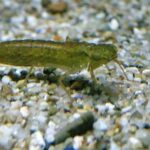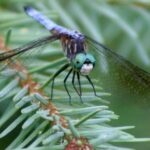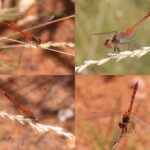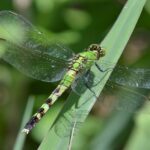The Blue Dasher, scientifically known as Pachydiplax longipennis, is a dragonfly species belonging to the skimmer family. This species is widely distributed across the United States, inhabiting various regions. The term “longipennis,” derived from Latin, means “long wings.” However, the wings of the Blue Dasher are not notably longer than those of other dragonfly species. In fact, the female Blue Dasher’s distinct body structure, with a slender abdomen, creates the illusion of longer wings. This dragonfly is classified as a summer species and is the sole member of its genus.
Scientific Classification
| Kingdom: | Animalia |
| Phylum: | Arthropoda |
| Class: | Insecta |
| Order: | Odonata |
| Suborder: | Anisoptera |
| Family: | Libellulidae |
| Genus: | Pachydiplax |
| Species: | P. Longipennis |
| Binomial name: | Pachydiplax Longipennis |
Description
Naiad:
The Blue Dasher’s naiad, or larval stage, is relatively smaller compared to other dragonfly species, measuring between 18 and 21 mm in length. Its coloration is striking, with a brownish hue on the dorsal side and a vibrant green ventral side. A singular, rear-facing spine is present on each side of the eighth and ninth abdominal segments, with the spine on the ninth segment being particularly prominent due to its length.

Adult:
The adult Blue Dasher is moderately sized, typically measuring between 35 and 45 mm in length. Its abdomen is broad, and the juvenile male, as well as the adult female, display a greenish tint on their thorax and face. The abdomen is characterized by a brownish-black coloration, accented by two parallel pale yellow to green lines. Their wings are generally clear, though a subtle brownish-yellow tinge may appear along the hindwing edges. Adult males develop a bluish-white pruinescence on the posterior part of their abdomen, and those from western regions may exhibit this pruinescence on their thorax. This feature is used as a territorial display during interactions with other males, particularly when defending breeding areas along water edges. Females also gradually adopt a blue coloration, though at a slower rate than their male counterparts.
Life Cycle
Like all dragonflies, the Blue Dasher spends its early life in aquatic environments. Remarkably, it can thrive in habitats with low water quality, characterized by reduced oxygen levels. The Blue Dasher’s life cycle spans an entire summer and the subsequent three seasons. Eggs are deposited in submerged vegetation, and upon hatching, the naiads feed on aquatic insects. As they mature, they gradually emerge from the water and climb onto nearby vegetation. During this process, their respiratory systems begin to inhale air, causing their bodies to expand. Eventually, their exoskeletons crack open, allowing the adult dragonfly to emerge. This transformation typically occurs at night. Adult Blue Dashers are most active from late June to September.
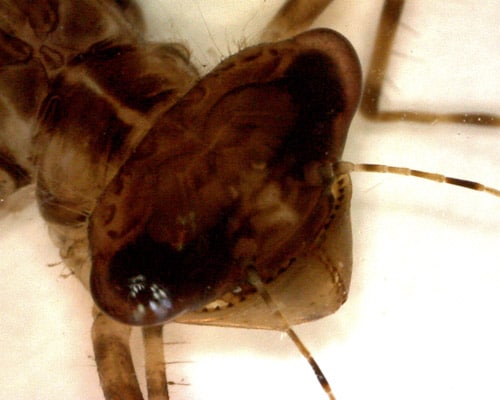
Range
The Blue Dasher is found throughout the United States, as well as in parts of Canada and Mexico. It is absent from the Rocky Mountains and the Dakotas. Its range extends from southeastern British Columbia to Ontario, and it is also found in the Pacific Northwest (Washington, Oregon, and California), the Okanagan Valley, and the southern Gulf Islands (including Galiano, Salt Spring, and Saturna Islands). Additionally, the species inhabits the Bahamas, Idaho, and other lowland regions, typically below 3000 feet in elevation.
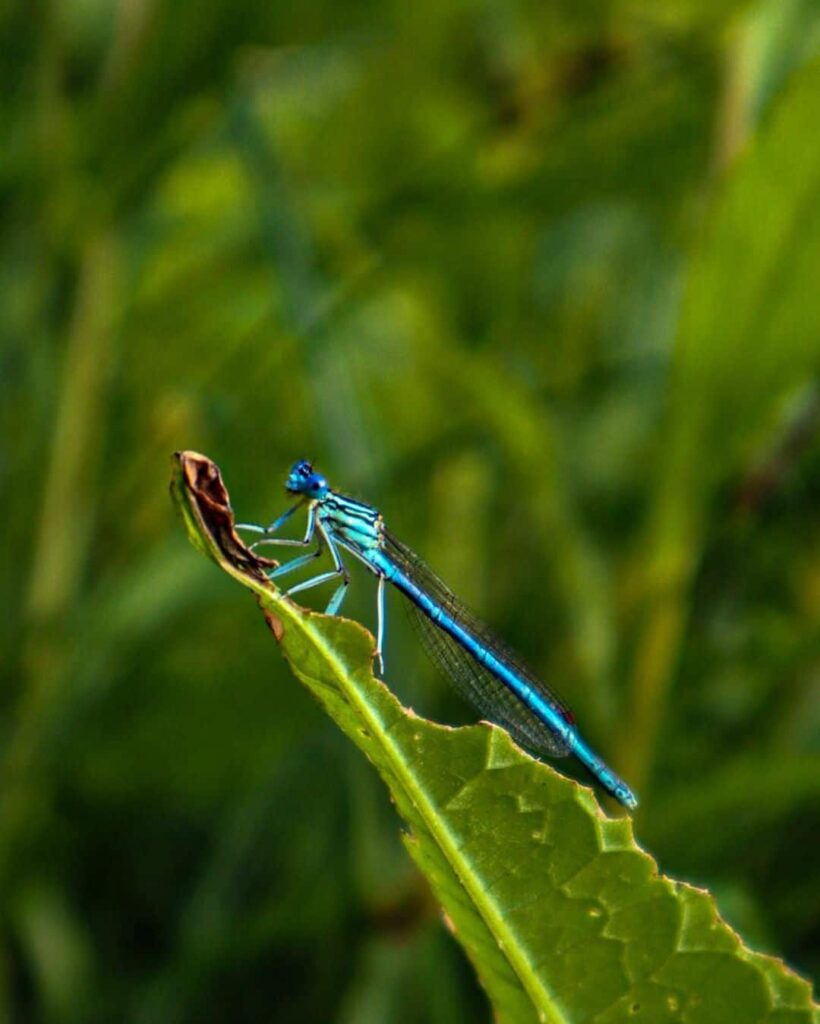
Habitat
This dragonfly prefers habitats such as ponds, marshes, lakes, and bogs, favoring areas with slow-moving water. The larvae are adaptable, thriving even in low-quality water environments with diminished oxygen content. This ecological resilience is particularly useful to biologists in Florida, who rely on the presence of Blue Dashers as an indicator of water bodies with suboptimal water quality.
Reproduction
Male Blue Dashers are typically found defending territories near water edges, while females tend to remain near vegetation. Females approach the water only when ready to lay eggs. Before mating, the male transfers sperm to the front of his abdomen, where it is stored. The courtship ritual is unique: the male grasps the female by the neck to initiate mating. The pair then copulates in midair, continuing the process after landing on a surface. When perched, both the male and female position their abdomens upright, and their wings are closed during copulation. The female deposits her eggs by dipping her abdomen into the water. Males often stand guard during this process to prevent other males from interfering or attacking the female and her eggs.
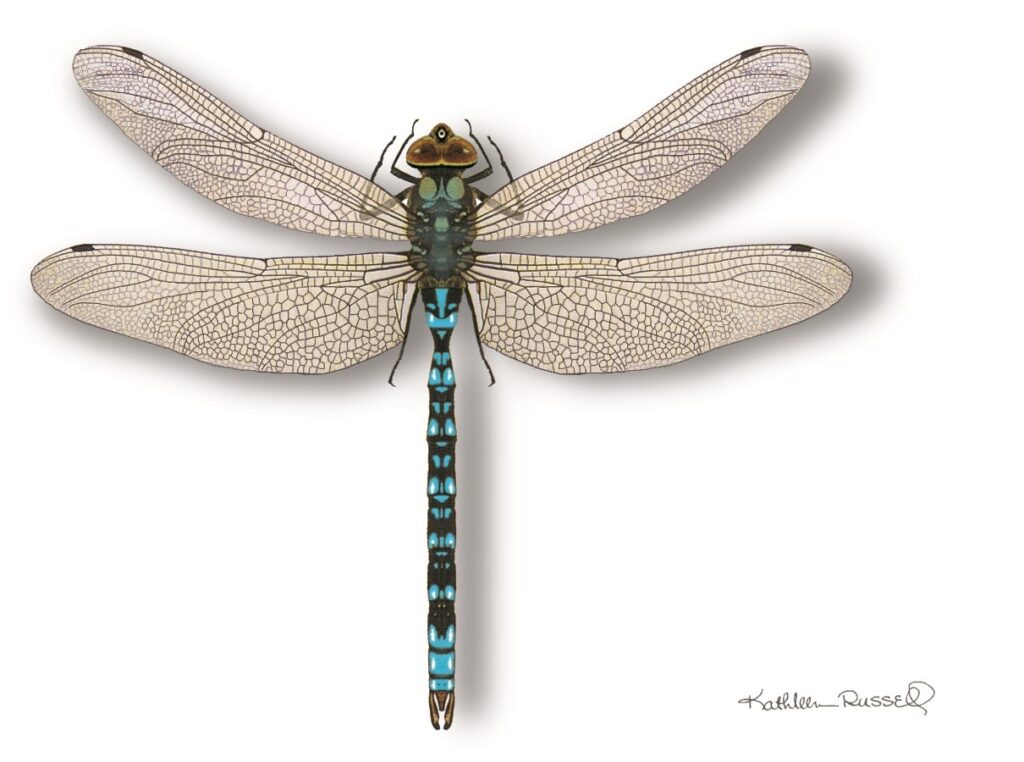
Diet
The Blue Dasher is a voracious carnivore, consuming large quantities of prey throughout the day. It is a formidable predator, often hunting from perches on rocks and twigs. It captures any prey within reach of its mandibles, with a particular preference for mosquito larvae. As it matures, its diet expands to include aquatic fly and mayfly larvae, tadpoles, small fish, and freshwater shrimp. Once an adult, it preys on soft-bodied insects such as flies, cicadas, moths, butterflies, flying ants, and termites. The Blue Dasher is exceptionally fast, capable of catching prey mid-flight and evading predators. Its compound eyes, composed of thousands of smaller ommatidia, provide a wide field of vision, enabling it to detect threats from all directions. The dragonfly employs a unique hunting technique, forming a basket-like shape with its legs to capture prey before delivering a swift, immobilizing bite, often while in flight.

Predators
Despite its agility and defensive adaptations, the Blue Dasher is preyed upon by various animals, including birds, frogs, and lizards. Birds often target the dragonfly’s wings, consuming the softer body parts. However, the Blue Dasher’s keen eyesight and swift flight allow it to evade most predators, reaching speeds of 18 to 35 mph when fleeing.
Did you know?
When dragonflies and damselflies first emerge they are often duller in colour, a state known as ‘teneral’, and it can take a few days for them to change into their brilliant hues. For example, Common blue damselflies are a pinkish-brown when they first emerge, turning sky-blue later on.
One of the most common damselflies in the UK.
Male:blue and black with a mushroom/button shaped mark on segment 2 (below the wing base).
Female: black and either blue or dull green with a thistle shaped mark on segment 2 (below the wing base).

